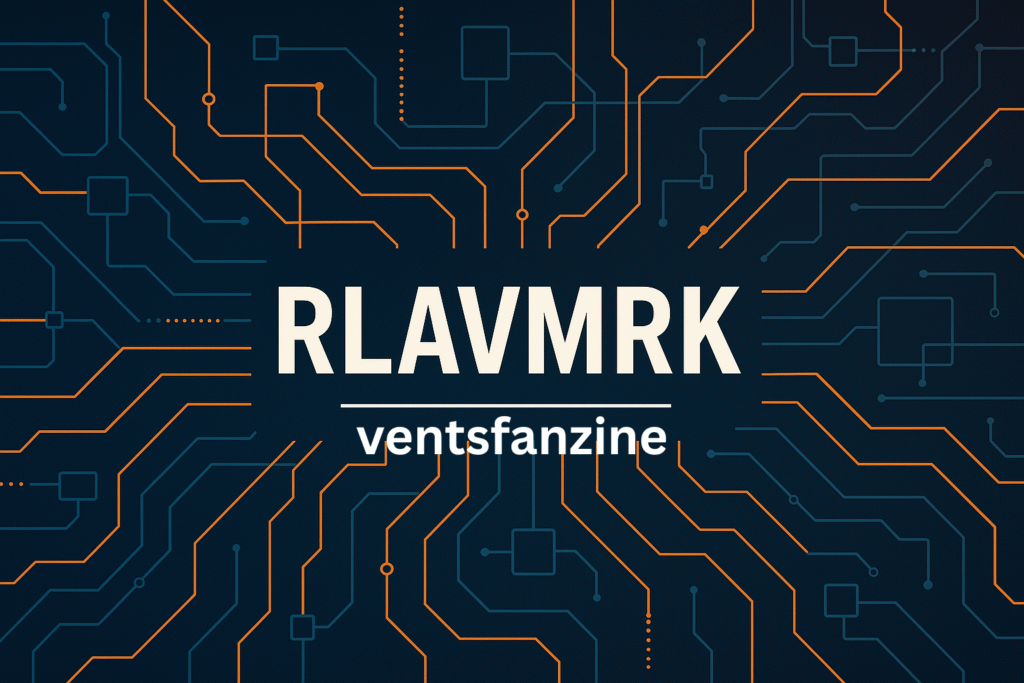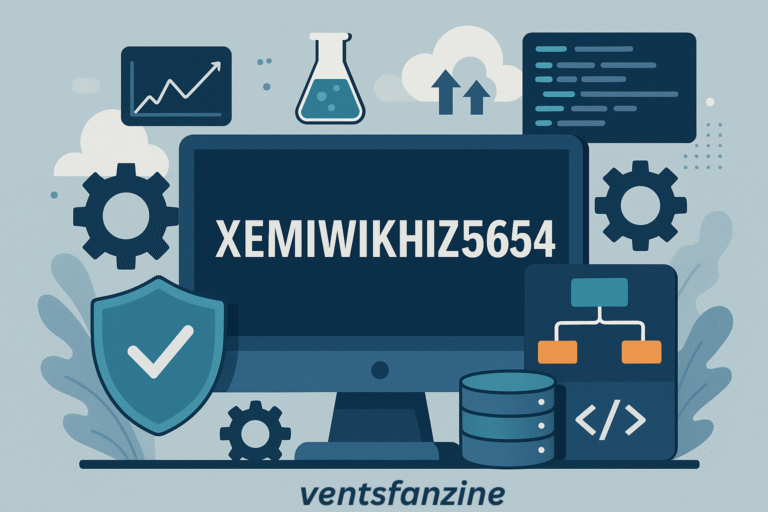
Introduction: Understanding the Value of Rlavmrk
In today’s fast-moving world, where industries are constantly evolving and users seek practical tools that simplify tasks or boost results, the term Rlavmrk has quietly entered conversations. Whether you stumbled upon it through a colleague, a forum, or by accident while browsing, the curiosity around Rlavmrk is understandable. It’s not flashy, it’s not widely advertised—but it is impactful for those who use it correctly.
This article aims to break down everything you need to know about Rlavmrk. From its true meaning and historical roots to how it fits into real-world use cases, we’ll walk you through why Rlavmrk may matter more than you think.
What Is Exactly Rlavmrk?
At its core, it is a modular process or protocol used across different environments to improve traceability, reliability, and layered validation. The term “Rlavmrk” isn’t an acronym but a coined word from early development phases in industrial data mapping. It is now used to define a system that organizes complex layers of information or workflows—especially in technical environments, manufacturing, and layered software engineering.
In simpler terms, Rlavmrk works as a connective structure—helping systems “talk” better internally and across platforms without confusion, loss, or delay. Think of it like a flexible tagging, tracking, and validating framework that plugs into existing infrastructure.
The Historical Background and Origins of Rlavmrk
Its wasn’t built in a lab overnight. Its concept has roots in early 2000s research focused on data lineage and process validation in factories. Back then, companies were dealing with inconsistencies in production lines, error detection, and reporting lags. Engineers needed a method to trace every single decision point, machine interaction, and material use—from start to finish.
Out of this demand, researchers began to experiment with modular verification marks (hence the eventual naming). Over time, this evolved into a more digital-first system—allowing for tagging and traceability in both hardware and software environments.
By the late 2010s, Rlavmrk had found applications in several industries—from automotive assembly to software deployment pipelines—due to its versatility.
Key Advantages of Rlavmrk
So why are more businesses and tech teams turning to it ? Below are several key reasons:
1. Improves Operational Transparency
Every layer of a process can be validated and logged using Rlavmrk principles. Whether it’s a human decision, a software trigger, or a mechanical step—everything is mapped clearly.
2. Reduces Error Cascades
Since each step is independently validated and traceable, if something fails, you can pinpoint the source quickly. This stops the domino effect of untracked errors.
3. Enhances Cross-Team Communication
Engineers, operators, managers, and even clients can all look at a unified Rlavmrk log and understand what’s happening without needing translations or multiple systems.
4. Scalable for Different Workflows
Whether you’re running a 3-person dev team or managing a global production facility, Rlavmrk can be adapted and scaled based on need.
5. Boosts Regulatory Compliance
Industries with tight audit trails—like healthcare, aerospace, or food manufacturing—benefit from the clean and detailed data trails Rlavmrk naturally produces.
Incorporating Rlavmrk Into Your Daily Routine
Integrating Rlavmrk into your routine doesn’t require a full overhaul. It works best when layered on top of existing systems with minor structural tweaks. Here are ways to start:
1. Start with One Process
Choose a repetitive or error-prone process—like batch processing, testing cycles, or material handoffs. Add Rlavmrk identifiers at every step.
2. Use Modular Trackers
Each point in the process should include a mark—whether it’s digital or physical—that links back to a core Rlavmrk registry.
3. Train for Feedback Loops
Encourage your team to monitor and report anomalies using Rlavmrk logs. This builds a culture of continuous tracking and learning.
4. Visual Dashboards
If you’re using Rlavmrk digitally, invest in simple visualization tools that can turn raw validation data into useful patterns or alerts.
5. Document Learnings
Every month, compile learnings from the Rlavmrk system. You’ll find hidden bottlenecks and time-saving shortcuts just from reviewing the trail.
Future Updates of Rlavmrk
Like any robust framework, Rlavmrk is evolving. Based on recent developments, here’s where it’s likely headed:
1. Integration with AI Systems
AI models trained on Rlavmrk data could predict process failures, suggest optimizations, or even adjust operations in real time.
2. Blockchain Layering
Expect to see Rlavmrk systems use blockchain to lock in records for legal compliance or high-stakes environments, adding another layer of trust.
3. Open-Source Modules
Developers across various platforms are pushing for Rlavmrk-based toolkits that can plug into project management tools, DevOps stacks, and IoT systems.
4. Cloud-First Architectures
As more companies go hybrid or cloud-native, Rlavmrk is being redesigned to work asynchronously and globally without relying on local installations.
Possible Issues and Debates Related to Rlavmrk
No system is perfect, and Rlavmrk has its share of criticisms and challenges:
1. Initial Learning Curve
Implementing Rlavmrk for the first time can be confusing. Teams may resist adding “another layer” to what already feels like a full stack.
2. Overhead Costs
Although lightweight in concept, setting up robust Rlavmrk protocols may require software upgrades or third-party consultancy—especially in older factories.
3. Data Privacy Risks
If misconfigured, the tracking nature of Rlavmrk could expose too much internal data—raising red flags in terms of privacy or corporate espionage.
4. Lack of Standardization
Because Rlavmrk is still evolving, there’s no universal format or guidebook—leading to inconsistencies in use across companies.
5. Human Over-Reliance
As systems become more Rlavmrk-dependent, some worry that staff may lean too heavily on data trails and ignore real-world intuition or experience.
Different Industrial Uses of Rlavmrk
The best way to appreciate Rlavmrk is to see where it’s already being applied. Here’s a breakdown by sector:
1. Manufacturing
Rlavmrk is used in multi-stage production lines to track each product’s status, machine usage, operator ID, and material batch—making recalls easier and audits simpler.
2. Software Development
In coding environments, Rlavmrk protocols can track every deployment, merge, or test cycle—reducing bugs and ensuring smoother rollouts.
3. Pharmaceuticals
Each component in a drug’s lifecycle—from ingredients to packaging—can be tagged using Rlavmrk structures to comply with safety regulations.
4. Agriculture
Farmers and supply chain managers use Rlavmrk systems to track crop cycles, fertilizer use, soil testing, and more—helping with transparency and forecasting.
5. Logistics
Rlavmrk tags on packages or pallets help companies know the exact journey of goods—location, temperature, handling conditions, and delivery timestamps.
6. Energy Sector
In renewable or traditional energy, Rlavmrk helps track asset lifecycles—from turbines to fuel stations—improving uptime and reducing accidents.
Conclusion: Why Rlavmrk Deserves Attention
Rlavmrk may not be a household term, but for those working in production, compliance-heavy fields, or digital ecosystems, it represents a major step toward better visibility and control.
It’s not just another protocol—it’s a system that respects the past while preparing for the future. Its quiet rise is powered not by marketing but by measurable benefits across real-world tasks. While it’s still maturing and has a few kinks, the direction is clear: Rlavmrk is here to help systems work smarter—not harder.




